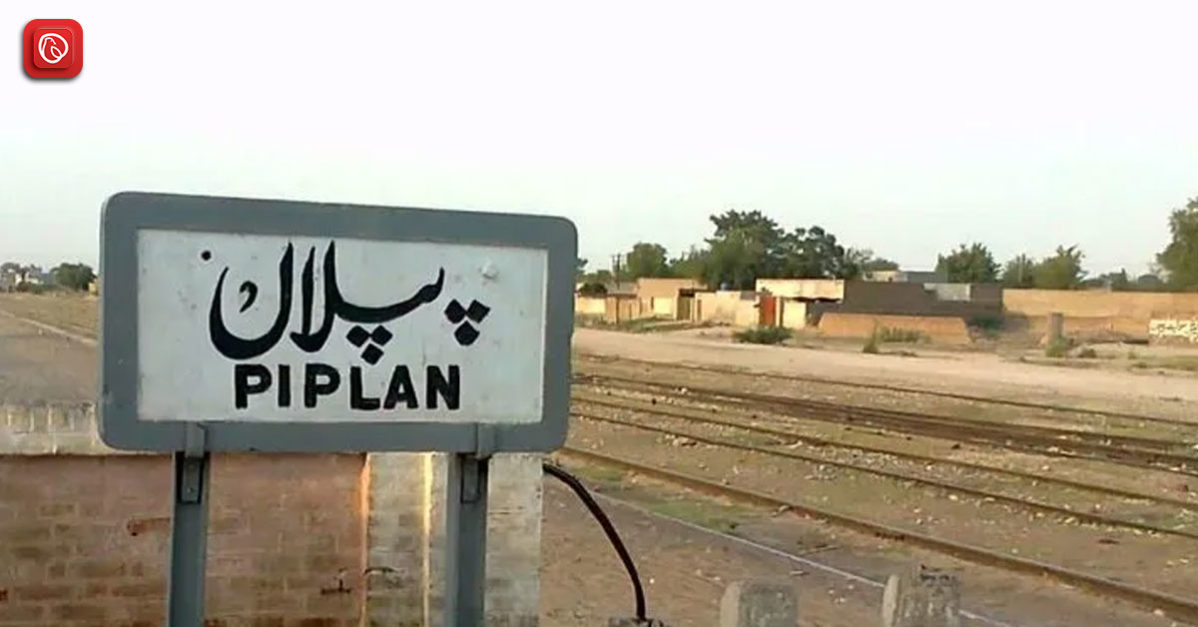
Piplan is a town in Pakistan’s Punjab province’s Mianwali District. It serves as the seat of government for Piplan Tehsil, the district’s administrative division. Piplan Tehsil has 403,938 people living there as of the 2017 census, with a more significant proportion of people living in rural areas (307,729) than in urban centres (96,209).
Learn more about the topography and history of this historic town of Piplan by visiting Graana.com.
The capital town of Piplan Tehsil in the Mianwali District of Punjab, Pakistan, is Piplan (Punjabi, Urdu: پِپلاں). Located approximately 52 km (by road) north of Mianwali, the district capital, Piplan, is encircled by several nearby towns.
The following is a list of Piplan’s Union Councils:
Here’s how you can reach this town from Islamabad, Lahore, and Karachi:
A surprising amount of historical, cultural, and natural beauty nearby is just waiting to be discovered. Let’s explore some of these fascinating places in more detail:
Constructed in the seventeenth century, this architectural wonder is evidence of Mughal artistic genius. The mausoleum, devoted to the venerable Sufi saint Shah Bahauddin, has beautiful calligraphy, elaborate carvings, and a calm ambience that provides insight into the area’s rich spiritual history.
About 25 kilometres from this town, set out on a historical journey. Here are the historic Katas Raj Temples, tucked away in rural environs. These intriguing temples, devoted to Lord Shiva, are significant to Hindus and provide a fascinating look into the area’s past. Discover the finely carved buildings and tranquil ponds, then lose yourself in this archaeological gem’s atmosphere.
About 30 kilometres from this town, the Dharmarajika Stupa and Monastery is where you can discover yet another layer of history. These Buddhist remains, which date to the second or third century BCE, provide evidence of the once-thriving Buddhist civilisation in the area. Examine the ruins of the stupa and monastery complex while imagining the monks’ lives.
The magnificent Indus River, one of Asia’s longest rivers, borders Piplan to the west. Outdoor enthusiasts have a plethora of possibilities to explore this marvel of nature. Enjoy a leisurely boat ride on the placid waters of the river, throw a line in and try fishing, or just unwind on the riverside and take in the amazing view. By visiting the Indus River, you may re-establish a connection with nature and enjoy a refreshing break from the bustle of the city.
This town has a climate of striking extremes, as does the entire Mianwali District. Prepare yourself for an excursion through the distinct seasons that characterise this area.
June is the hottest month during this scorching season, which runs from May to September. In June, the monthly average temperature surges to an astounding 42°C (107.6°F), with highs as high as 50°C (122°F).
Winter arrives with a dramatic shift that provides a much-needed break from the summer’s oppressive grip. Cool temperatures arrive in December and January when average monthly lows drop as low as 3–4°C (37.4–39.2°F). This substantial reduction in temperature, though still not unbearably cold, is a welcome change and makes outside activities more comfortable.
There is an intriguing tale associated with the word “Piplan” that mirrors the historical changes that have occurred in the area. Let’s explore the history behind the name of this town:
Piplan is located in Pakistan’s irrigated zone. The two key seasons are Rabi (October–March) and Kharif (April–September). Pulses, wheat, and rape seed/mustard were the rabi crops. Groundnuts (peanuts) are among the crops grown during the Kharif season. Sugarcane is planted all year round.
The primary source of income in this town is agriculture. Yet, from 1957 to 1982, Kohinoor textile factories operated textile factories that employed about 3,000 people. Following the mill’s closure in October 1982, the region’s unemployment rate rose.
Following are some of the FAQs:
Piplan is a town situated in Punjab province, Pakistan. It functions as the capital of Piplan Tehsil within Mianwali District.
Piplan experiences extreme weather, with June being the hottest month, averaging a scorching 42°C (107.6°F) and reaching highs of up to 50°C (122°F).
The town’s name reflects its historical transformation. Before 1947, it was called “Peepul” or “Peepul wala,” referencing the sacred Peepul tree. After independence, the name evolved to “Peepul-Aan” and the present-day “Piplan.”
Piplan is divided into two Municipal Committees (MCs) – MC Piplan and MC Kundian – that handle local matters in urban areas. Additionally, twelve Union Councils (UCs) address local needs and development projects at the grassroots level.
This was all about Piplan. For more information, visit Graana.com.
Karachi: Sindh Chief Minister Syed Murad Ali Shah on Thursday acknowledged that Karachi’s unplanned expansion…
Karachi: Pakistan’s foreign exchange reserves held by the State Bank of Pakistan (SBP) rose by…
Islamabad – The Capital Development Authority (CDA) has formally approved the construction of the IBM…
ISLAMABAD – A meeting was held at the CDA headquarters under the chairmanship of Capital…
Lahore: The Lahore Development Authority (LDA) has secured approval for the construction of four new…
Islamabad: The Islamabad Chamber of Commerce and Industry (ICCI) has announced its plan to host…